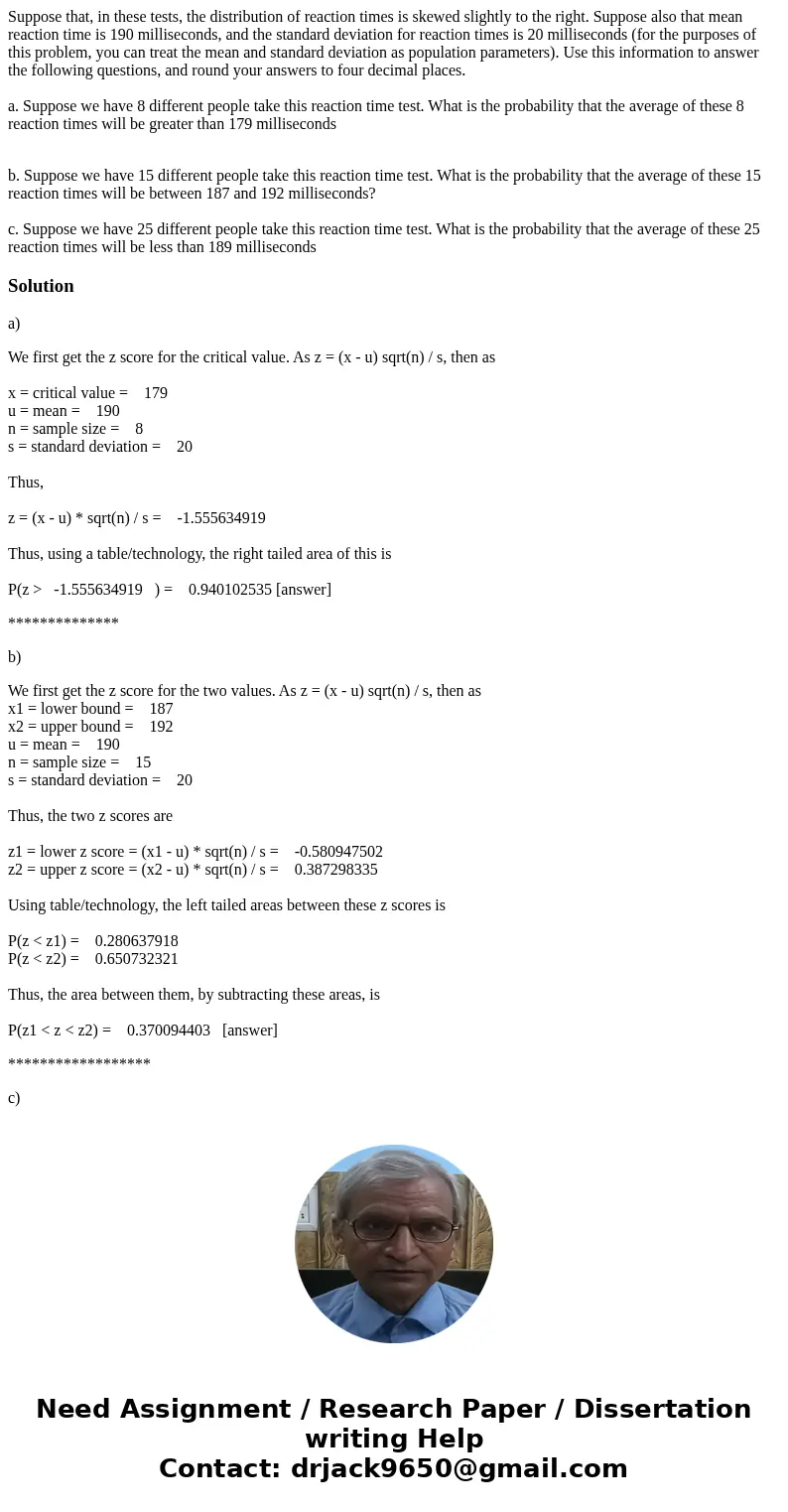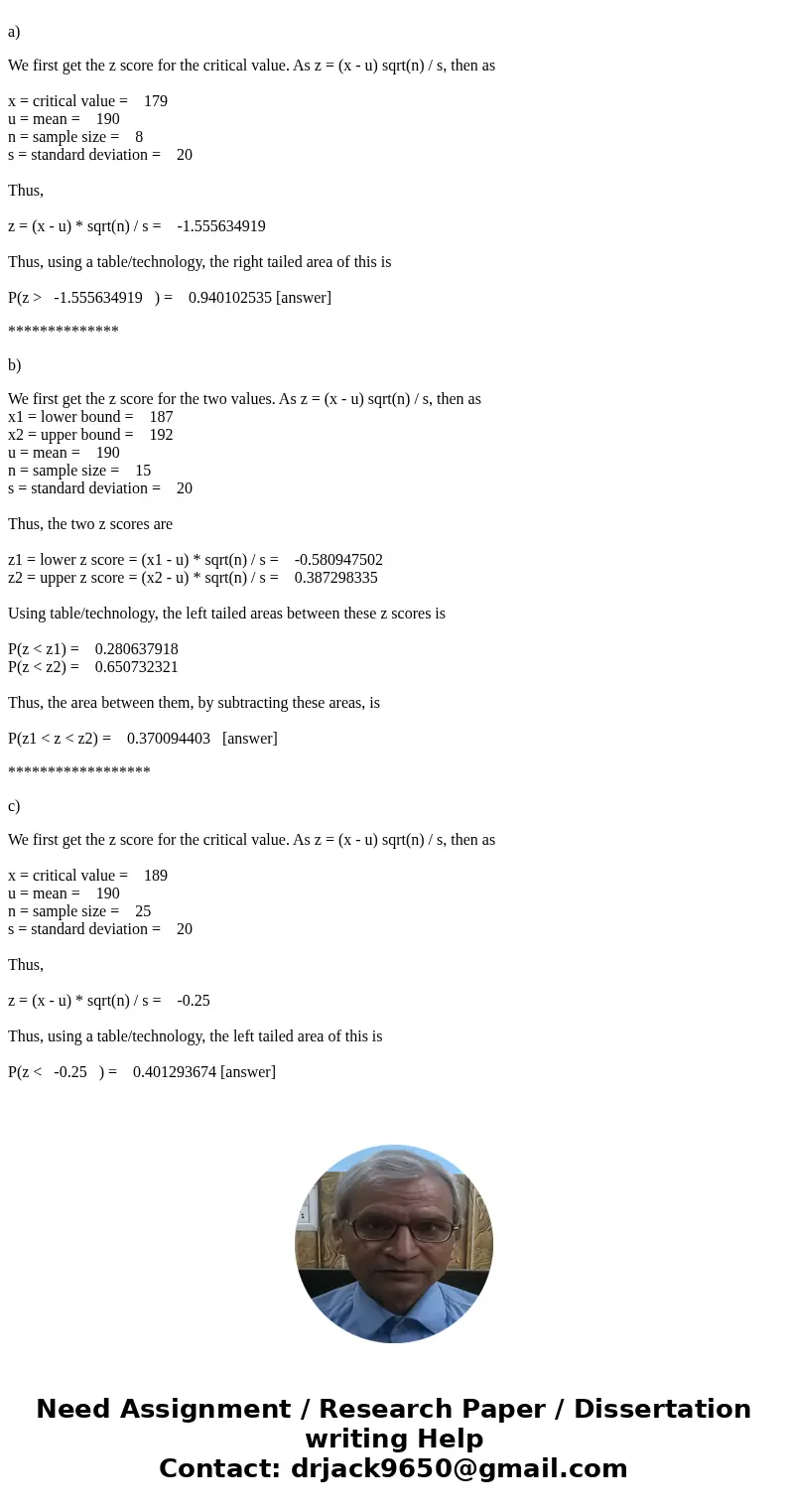Suppose that in these tests the distribution of reaction tim
Suppose that, in these tests, the distribution of reaction times is skewed slightly to the right. Suppose also that mean reaction time is 190 milliseconds, and the standard deviation for reaction times is 20 milliseconds (for the purposes of this problem, you can treat the mean and standard deviation as population parameters). Use this information to answer the following questions, and round your answers to four decimal places.
a. Suppose we have 8 different people take this reaction time test. What is the probability that the average of these 8 reaction times will be greater than 179 milliseconds
b. Suppose we have 15 different people take this reaction time test. What is the probability that the average of these 15 reaction times will be between 187 and 192 milliseconds?
c. Suppose we have 25 different people take this reaction time test. What is the probability that the average of these 25 reaction times will be less than 189 milliseconds
Solution
a)
We first get the z score for the critical value. As z = (x - u) sqrt(n) / s, then as
x = critical value = 179
u = mean = 190
n = sample size = 8
s = standard deviation = 20
Thus,
z = (x - u) * sqrt(n) / s = -1.555634919
Thus, using a table/technology, the right tailed area of this is
P(z > -1.555634919 ) = 0.940102535 [answer]
**************
b)
We first get the z score for the two values. As z = (x - u) sqrt(n) / s, then as
x1 = lower bound = 187
x2 = upper bound = 192
u = mean = 190
n = sample size = 15
s = standard deviation = 20
Thus, the two z scores are
z1 = lower z score = (x1 - u) * sqrt(n) / s = -0.580947502
z2 = upper z score = (x2 - u) * sqrt(n) / s = 0.387298335
Using table/technology, the left tailed areas between these z scores is
P(z < z1) = 0.280637918
P(z < z2) = 0.650732321
Thus, the area between them, by subtracting these areas, is
P(z1 < z < z2) = 0.370094403 [answer]
******************
c)
We first get the z score for the critical value. As z = (x - u) sqrt(n) / s, then as
x = critical value = 189
u = mean = 190
n = sample size = 25
s = standard deviation = 20
Thus,
z = (x - u) * sqrt(n) / s = -0.25
Thus, using a table/technology, the left tailed area of this is
P(z < -0.25 ) = 0.401293674 [answer]


 Homework Sourse
Homework Sourse